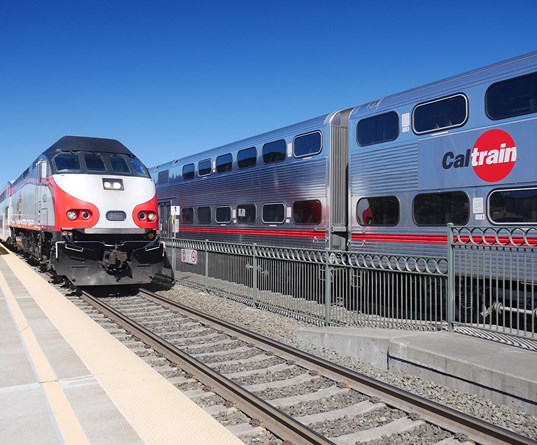The electrification of the Caltrain rail corridor that connects San Jose to San Francisco will improve the service, capacity and reliability of the transit system. It will remove the current diesel trains and help implement the future of high-speed rail in California.
Improving passenger services
We are providing design and build services for the electrification of the 52-mile Caltrain corridor. As part of this, we are upgrading various aspects of the commuter rail service which runs through San Francisco, San Mateo and Santa Clara Counties – as well as 17 cities along the corridor. The upgrades will improve the performance, operating efficiency, capacity, safety, sustainability and reliability of the rail service.
Minimising passenger disruption through efficient working
A 25kv AC Overhead Catenary System (OCS) will serve as the power source for the new electric vehicles that will carry commuters throughout the area.

The OCS will be powered by two traction power substations, one switching substation and seven paralleling substations. Whilst ensuring minimal disruption to the 92 daily Caltrain trains serving over 65,000 commuters, we will also replace signal systems and earth existing facilities as part of the process to electrify the 52 miles of existing corridor.
In mid-2020, the team completed two of the longest electrical wire runs on the project in record time. Instead of using traditional methods, the team used a wire train – a self-driven maintenance vehicle – to help them install the OCS wires safely and more efficiently. This resulted in the team being able to string two wires extending about 5,800 feet in one day, a rate much higher than traditional methods.
Caltrain corridor
AC overhead catenary system